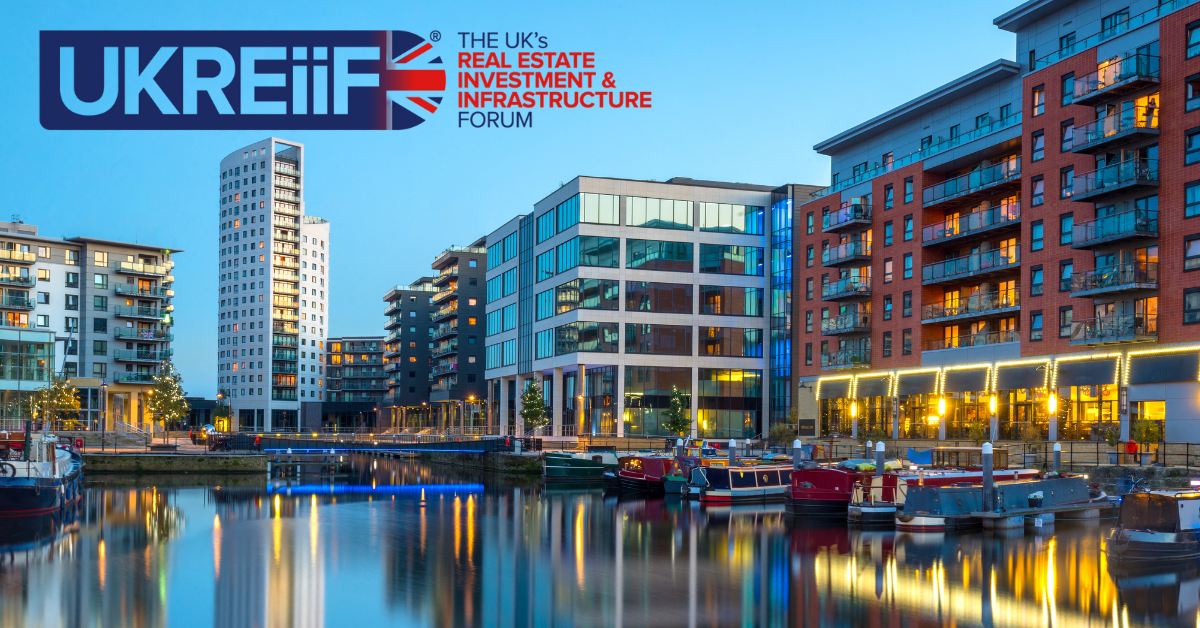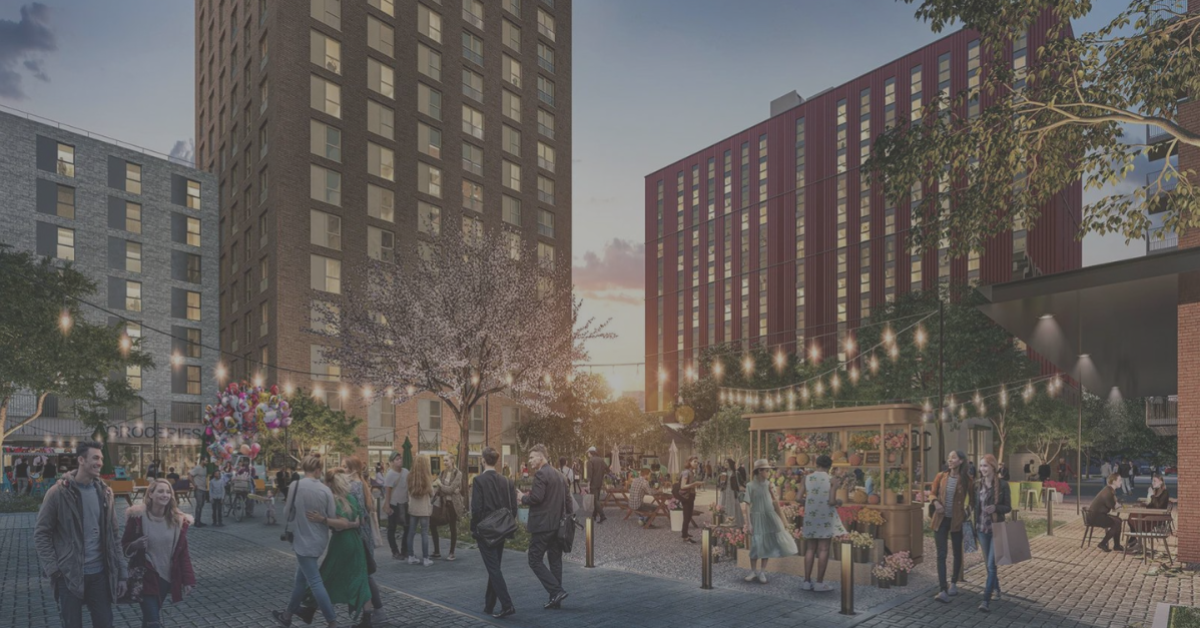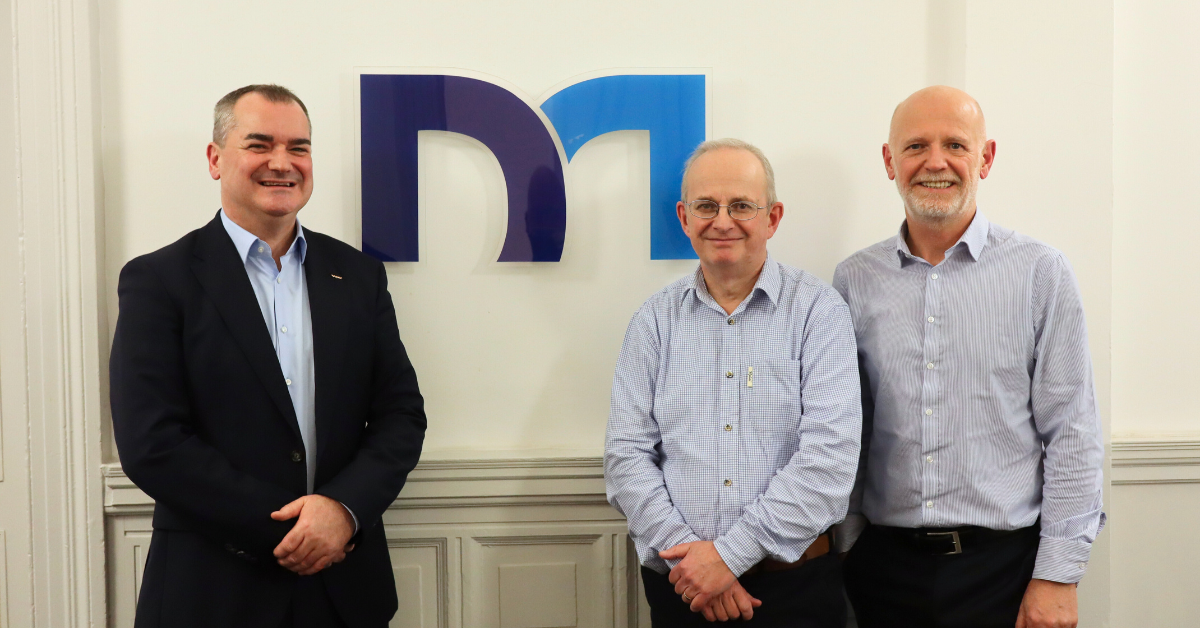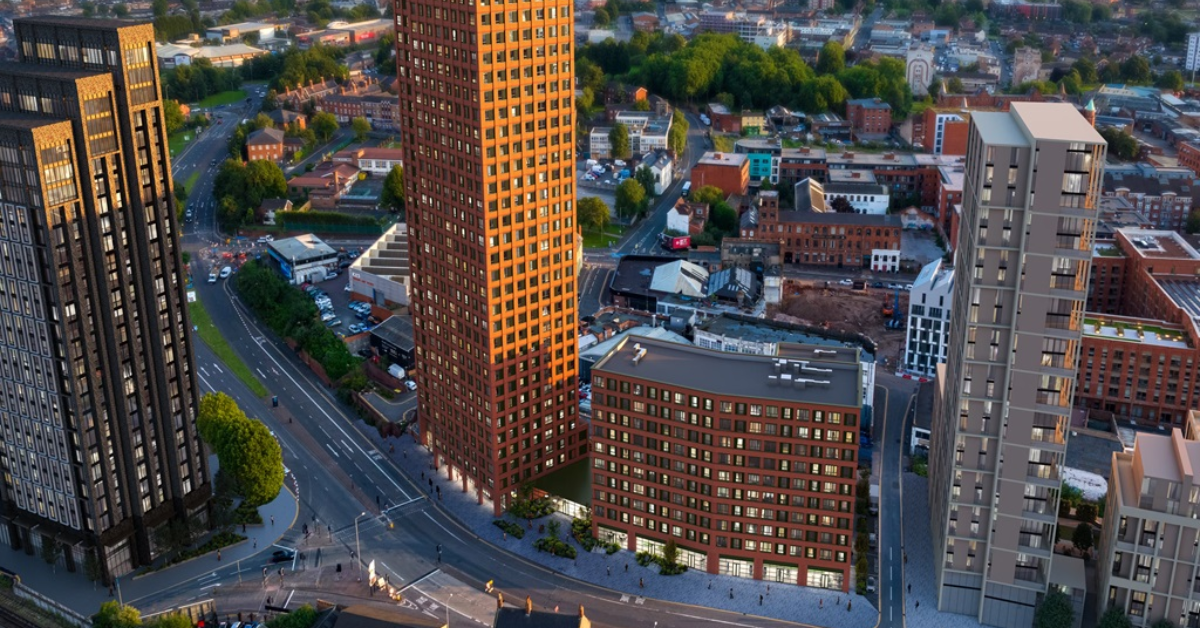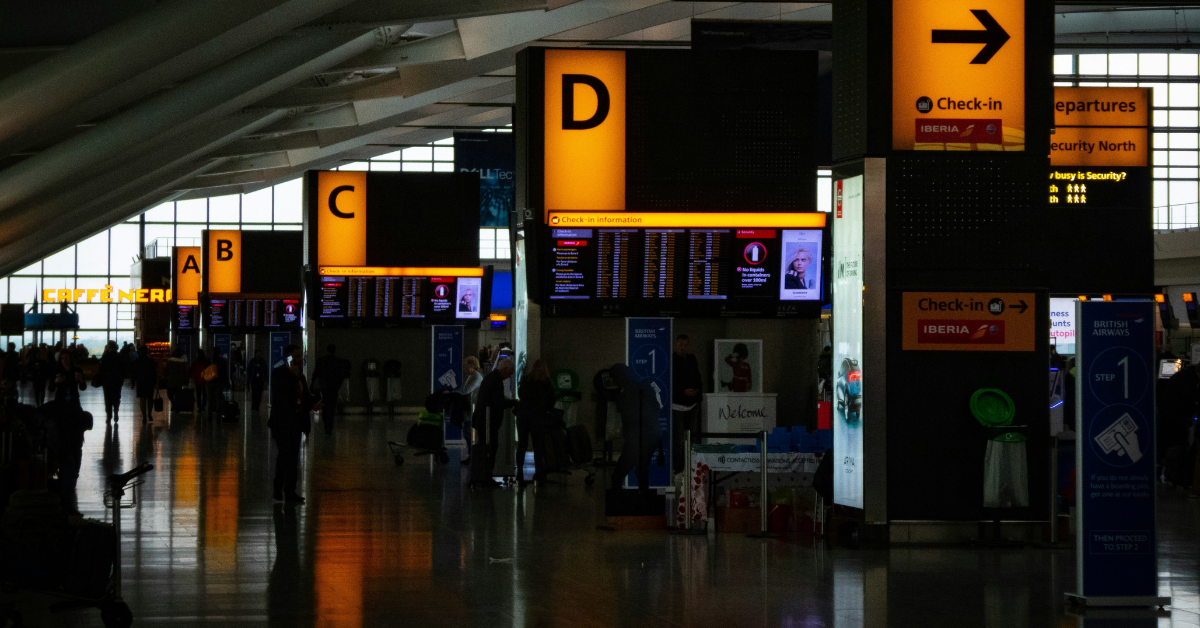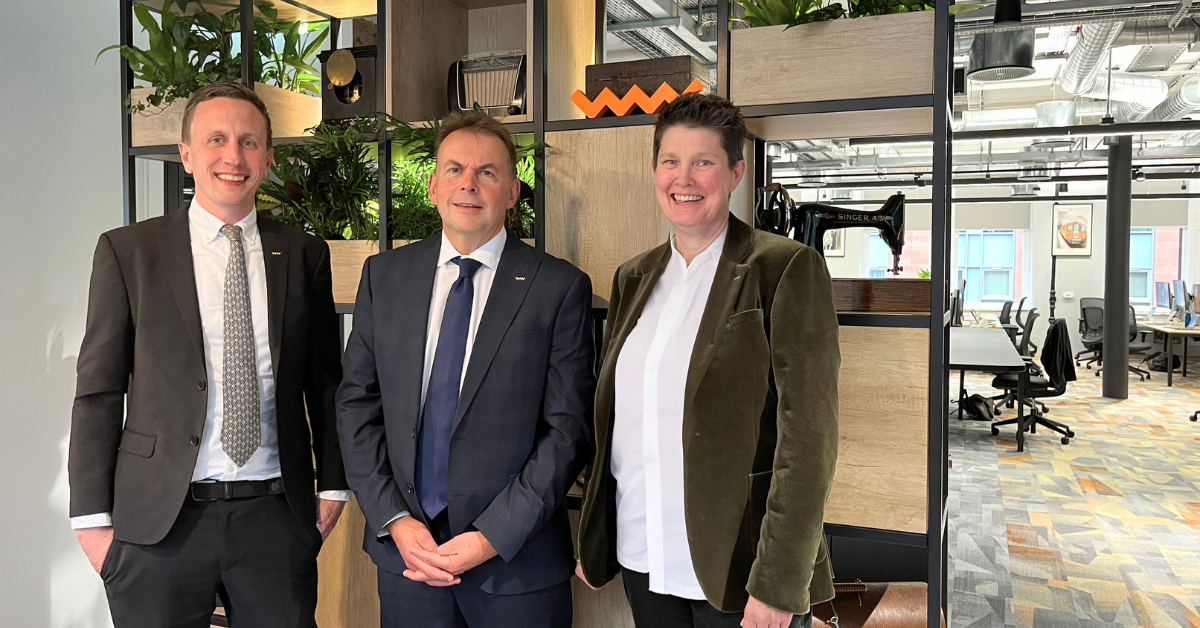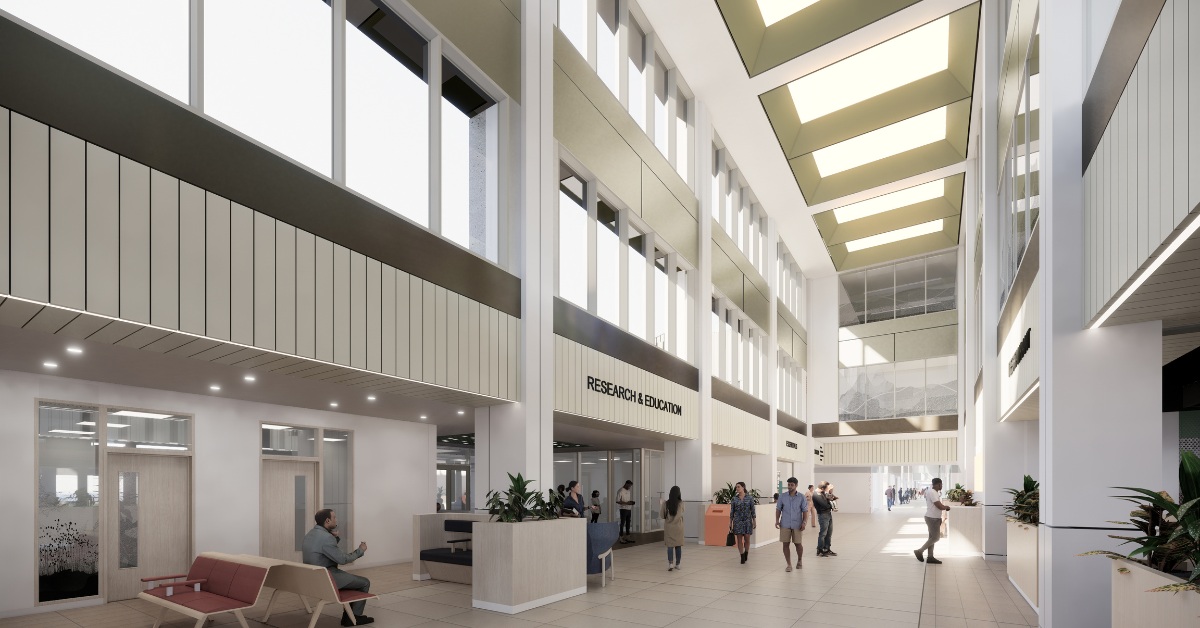Wallace Whittle at UKREiiF 2025
News
WWe are heading to Leeds for UKREiiF 2025
WWill we see you there?
Hosted by the UK Real Estate Investment and Infrastructure Forum (UKREIIF), the upcoming event stands as a pivotal platform where industry leaders, innovators, and stakeholders converge to exchange insights and explore collaborative opportunities shaping the future of renewable energy and infrastructure investment.
Set amidst the vibrant heart of Leeds, from Tuesday 20th May to Thursday 22nd May, this annual gathering promises an engaging agenda. From keynote addresses to panel discussions, workshops, and networking sessions, it will encourage meaningful dialogue and drive actionable outcomes within the sector. With a keen focus on the latest trends, innovations, and investment strategies, we aim to gather invaluable knowledge and forge further strategic partnerships in this evolving landscape.
Our delegates, ready to contribute their expertise and perspectives, will engage in key discussions covering sustainability, market dynamics, regulatory frameworks, and emerging technologies within renewable energy and infrastructure. But it’s more than just showcasing what we know – it’s about learning, collaborating, and growing together. Whether we’re sharing insights, brainstorming solutions, or simply swapping stories over coffee, we’re eager to meet with current and new connections.
We’re looking forward to the event, eager to catch up with many of our valued clients and collaborators, and explore new opportunities.
If you’d like to arrange a meeting over coffee or a drink, please reach out to our attendees below.
ESG & Sustainability

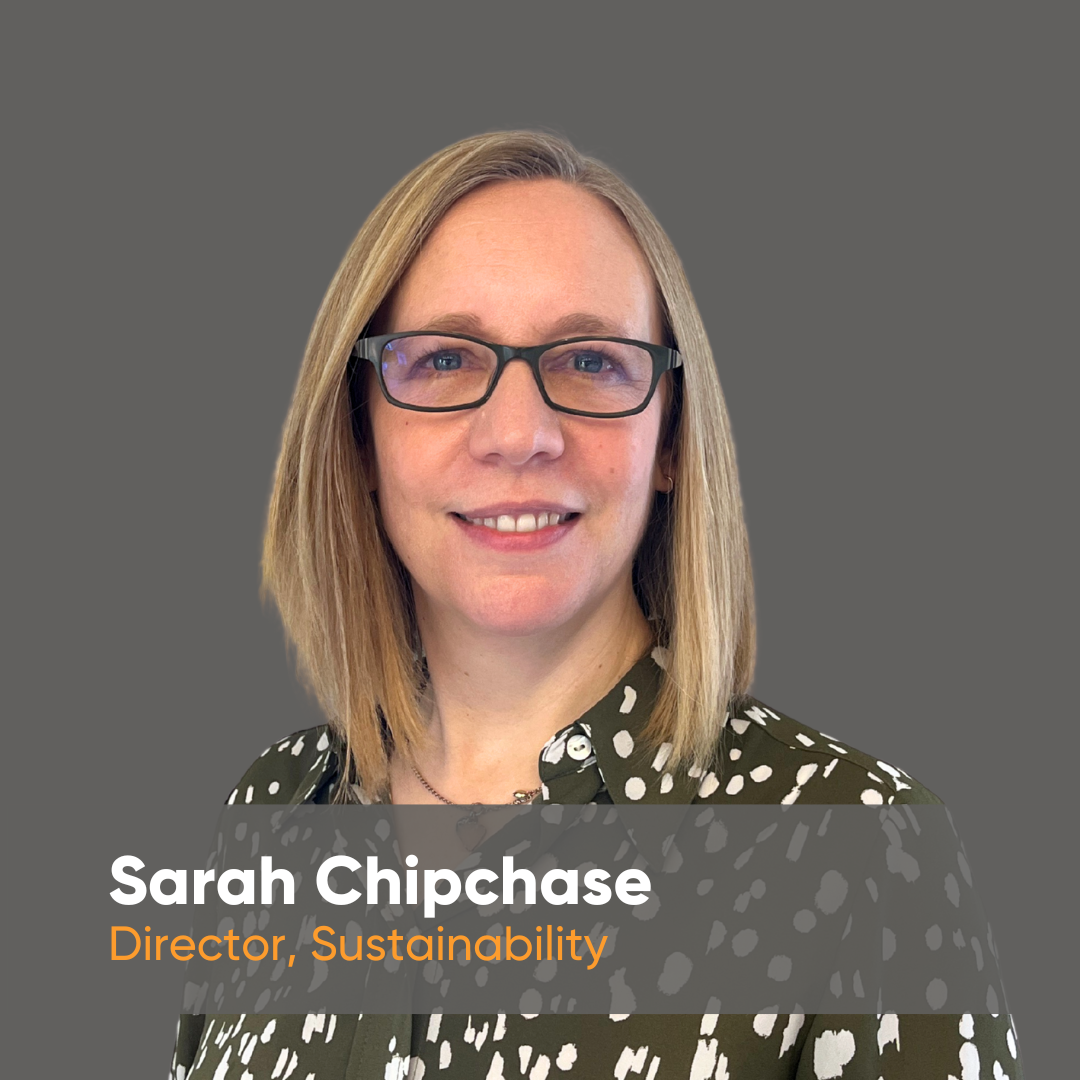
Nick Hayes, Head of ESG & Sustainability – [email protected]
Connect with Nick on LinkedIn.
Sarah Chipchase, Director Sustainability – [email protected]
England



Craig Robertson, Director England and Head of Residential – [email protected]
Connect with Craig on LinkedIn.
Paul Dean, Director, Manchester – [email protected]
Connect with Paul on LinkedIn.
Darren Wright, Director, Birmingham – [email protected]
Scotland



Barry McKeane, Director Glasgow – [email protected]
Connect with Barry on LinkedIn.
Stephen Osborne, Director Edinburgh- [email protected]
Connect with Stephen on LinkedIn.
Steven Dunn, Director Scotland – [email protected]
Related Articles
Resilience Under Fire: What the Heathrow Outage Reveals
News
Resilience Under Fire: What the Heathrow Outage Reveals
Resilience Under Fire: What the Heathrow Outage Reveals
Last week, we witnessed a major disturbance at Heathrow Airport due to a fire at North Hyde substation, which as a result caused widespread disruption, leading to the cancellation of nearly 1,400 flights and affecting over 200,000 passengers.
While power was restored and the airport returned to a full schedule by Sunday, the incident has triggered investigations by the government and Heathrow itself into the cause of the outage, the response, and the broader resilience of critical national infrastructure.
A key point emerging from the immediate aftermath is the claim by National Grid’s CEO that sufficient power was available from other substations for Heathrow to remain operational, raising questions about the airport’s preparedness and decision-making during the crisis, but it also raises questions within the industry on the importance of wider resilience across sectors, from Data Centres, to education. We spoke to Stephen Phimister, Director of Engineering at Wallace Whittle, to hear his perspective on the importance of resilience.
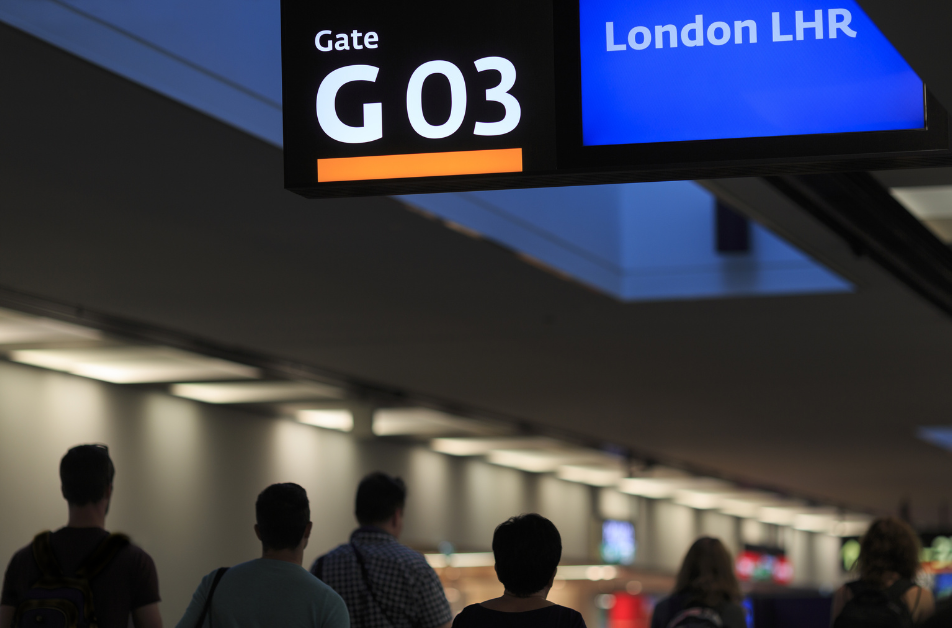
Despite Heathrow having multiple electricity connections and reported on-site, the fire at the North Hyde substation appears to have caused an outage of such significance the airport had to be closed. Thus highlighting a vulnerability where a single event can cripple a critical system, even with redundancy measures in place and it’s a reminder of how easily critical infrastructure can be disrupted.
“Grid Supply Points (GSPs) play a vital role in transforming high-voltage electricity from the transmission network, typically 275kV or 132kV, down to distribution levels around 66kV or 33kV. Each GSP is generally equipped with two transformers, operating in an N+N configuration, meaning both can handle the load if one fails. A failure of a single transformer creates what is known as an N-1 condition, which the system can typically withstand. However, in the case of Heathrow, the fire not only caused the failure of the first transformer but also appears to have compromised or shut down the second transformer, resulting in an N-2 condition, complete system failure. ” Stephen explained.
Although Heathrow had backup diesel generators to maintain safety-critical systems, these were not sufficient to power the entire airport. According to Heathrow’s CEO, Thomas Woldbye, switching to the other two substations “takes time.” However, the head of National Grid indicated that these substations were operational and could have supplied enough power to keep the airport running. This discrepancy raises concerns about the speed and effectiveness of Heathrow’s electrical reconfiguration procedures and its overall preparedness for handling such emergencies.

What Happens When the Lights Go Out?
This incident raises the issue of the importance of a stable electricity grid. With increasing reliance on the grid how could a major outage affect wider society, and how consequences of such an outage could ripple across multiple sectors. Here’s a generalised glimpse into how different parts of society could be affected:
Built with resilience in mind, data centres typically operate with at least N+1 generators and uninterruptible power supplies (UPS). As demonstrated during the Heathrow incident, these facilities continued to function without interruption.
In an N-1 scenario, hospitals are likely to stay on grid power. However, in an N-2 event, they would switch to on-site generation to ensure all critical infrastructure remains operational, albeit with the possibility of some local disruptions. You can learn more about our approach to Electrical Categorisation in Healthcare here.
These facilities often pay a premium to be supplied by two separate GSPs, ensuring continuity of operations even during significant outages.
Most office buildings maintain only life safety systems (emergency lighting and evacuation support) during power failures. While some tenants may have their own generators to sustain limited operations, these rely on the availability of essential landlord services, such as water and sanitation, which could also be compromised during prolonged outages.
The majority of shops and offices lack backup power, leading to mass evacuations of premises and business closures.
The impact of such disruptions extends far beyond commercial and institutional sectors, affecting everyday life in numerous ways. While diesel and internal combustion engine (ICE) buses may continue operating, electric buses are left stranded once their batteries run out, as EV charging infrastructure is rarely supported by backup generators. Major railway stations may continue to function, albeit with reduced capacity, but smaller local stations, lacking on-site power support, are likely to shut down entirely.

What can we learn from this?
The National Grid substation fire serves as a stark reminder of how fragile critical infrastructure can be and the cascading effects of a major power failure. One key takeaway is that resilience is often only noticed when it fails. The impact of incidents on the electricity grid, or even within private premises, can impact business operations. This highlights the need to consider not just primary failures but also worst-case cascading failures in resilience planning.
The incident also emphasises that business continuity planning cannot be a one-size-fits-all approach. Underscoring the importance of regularly reviewing and testing backup systems to ensure they function properly in a crisis, and the urgent need to strengthen the protection of critical national infrastructure. This is especially important given that Heathrow is a privately operated business and not under direct government control.
“Accepting that Heathrow is a private operation, ultimately, the Heathrow outage is a wake-up call for governments, infrastructure providers, and businesses to consider the importance of resilience. As the complexity of modern systems grows, so does the need to build robust and adaptable infrastructure that can withstand challenges. Investing in resilience today is not just a precaution, it’s necessary for future safeguarding.”
It would be easy to suggest that resilience is added everywhere but that just isn’t practical or economical. Instead, consideration needs to be given to the impact of disruption on a number of factors including cost, operational impact and reputational damage.“ Stephen concluded.
At Wallace Whittle, we understand the importance of resilience in critical infrastructure. If you’re looking to strengthen the resilience of your projects or would like to discuss how our expertise can support your engineering needs, reach out to Stephen Phimister or contact us at [email protected]
Wallace Whittle Welcomes Sarah Chipchase as Director of Sustainability
News
Wallace Whittle Welcomes Sarah Chipchase as Director of Sustainability
Wallace Whittle Welcomes Sarah Chipchase as Director of Sustainability
Wallace Whittle is excited to welcome Sarah Chipchase to the team as our new Director of Sustainability, bringing over 20 years of expertise in driving environmental performance in the built environment.
Sarah, who will be based in Leeds, joins us to lead and develop our growing ESG & Sustainability Consultancy, working closely with Nick Hayes, our Head of ESG and Sustainability. With extensive experience in sustainability certifications such as BREEAM, WELL, and NABERS, Sarah brings a wealth of knowledge to help our clients meet and exceed their sustainability goals.
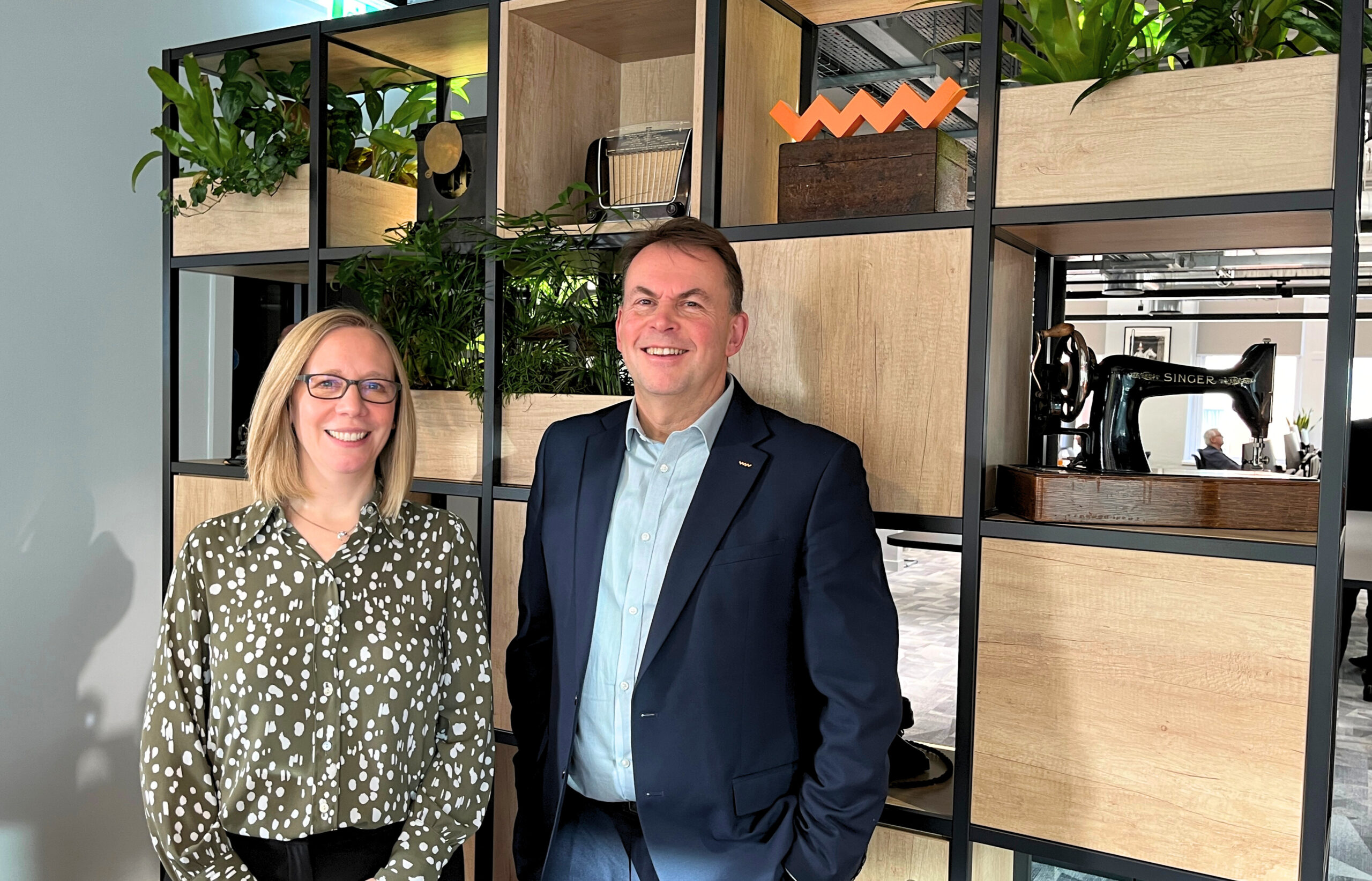
“Sustainability matters in every part of modern building projects. Funders want to see environmental performance designed into plans, and end users expect the buildings they occupy to be as sustainable as possible. Wallace Whittle already has an impressive track record in this space, and I’m excited to build on that momentum as we help clients address their sustainability priorities.” Sarah shared.
Sarah’s career began in environmental auditing and management systems, which led her into the world of sustainable engineering and building certification. Having managed teams for most of her career, she has developed a strong track record in overseeing compliance frameworks and guiding clients through complex certification processes.
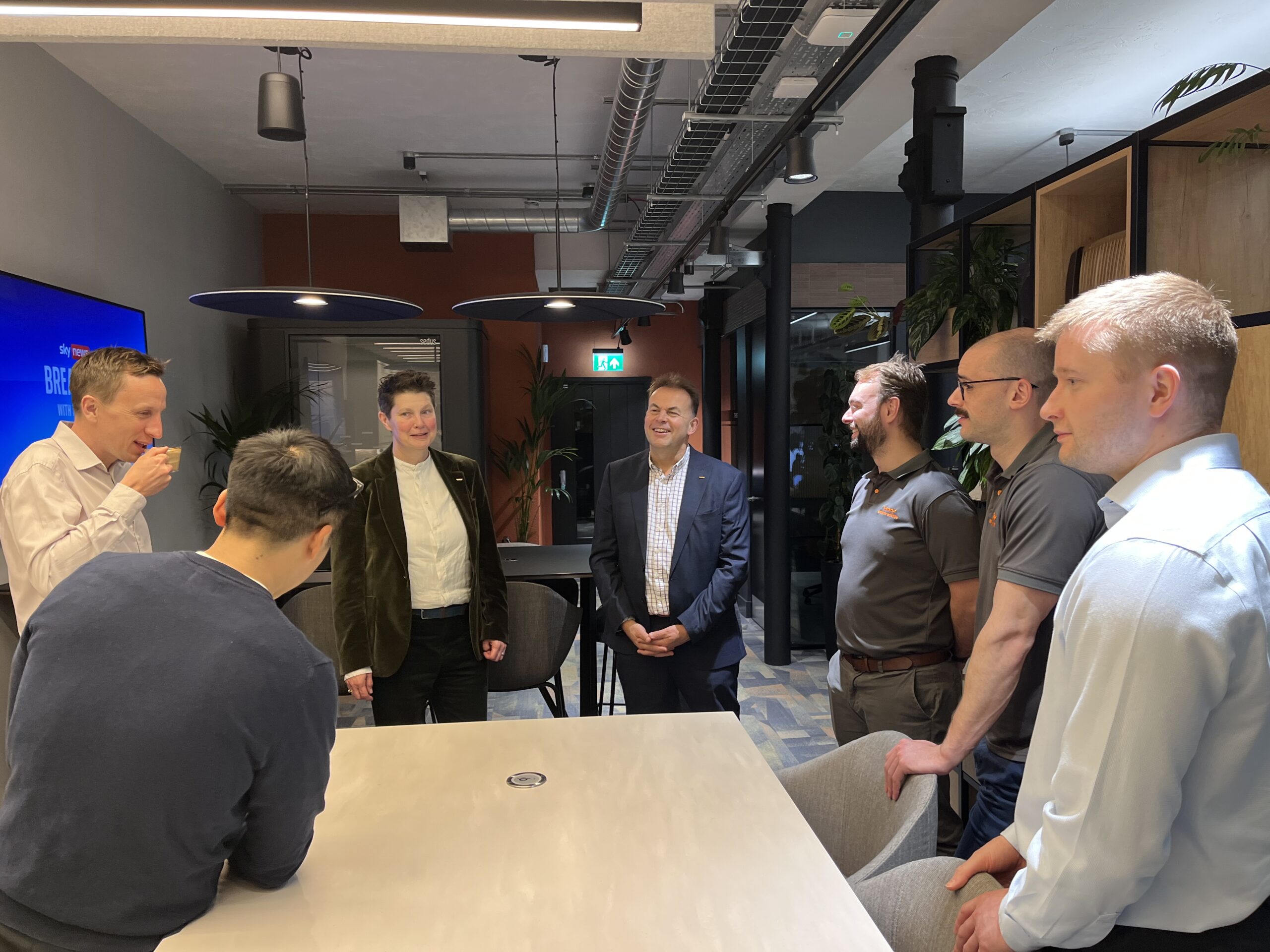
A key part of Sarah’s role will be to enhance Wallace Whittle’s sustainability advisory services and drive the adoption of PathWWay, our unique ESG management tool. PathWWay provides a customisable dashboard that allows project teams to set tailored ESG criteria and track progress, offering a single source of verifiable information that can be shared across stakeholders.
Nick Hayes, Head of ESG and Sustainability, shared
“Sustainability is still a very fast-moving part of the building sector and clients need the right experts onside to help them meet their targets and ambitions. Sarah is a recognised expert in how building projects can not only meet their sustainability compliance obligations, but how they can set new standards and innovate. She’s a hugely valuable addition to the team and brings a wealth of experience in this important area.”
As Wallace Whittle continues to expand our sustainability consultancy and strengthen our presence in England and beyond, Sarah’s leadership will play a key role in shaping the future of our work in sustainable engineering.
Connect with our team today to explore how we can help your business achieve its ESG & Sustainability goals, or to learn more about the innovative tools and services we offer visit our dedicated ESG & Sustainability Hub
Wallace Whittle Joins the CQIC Charter to Champion Quality
News
Wallace Whittle Joins the CQIC Charter to Champion Quality
Wallace Whittle Joins the CQIC Charter to Champion Quality
Wallace Whittle has recently committed to the Construction Quality Improvement Collaborative (CQIC) Charter, which aligns with our vision of placing quality at the forefront of all decision-making to foster a sustainable quality culture.
This commitment supports the objectives outlined in the Scottish Construction Accord, aiming to transform the construction sector by enhancing quality, sustainability, and collaboration. The Scottish Construction Accord, launched in October 2022, represents a collaborative effort between Scotland’s public sector and the construction industry to transform the sector. This initiative aims to create a sustainable, profitable, diverse, and innovative construction industry that benefits all of Scotland.
The Charter outlined by the CQIC is founded on five key values:
Developing a sector that believes in continuous improvement, is willing to change and is ambitious for the industry.
Working together to share knowledge, lessons learned and best practice.
Taking pride in what we do, always doing out best, aiming for customer satisfaction and taking ownership and accountability when we get it wrong.
Building an industry that is recognised for its honesty and integrity.
Working across the industry to building professionalism, leadership, trust and self-respect.
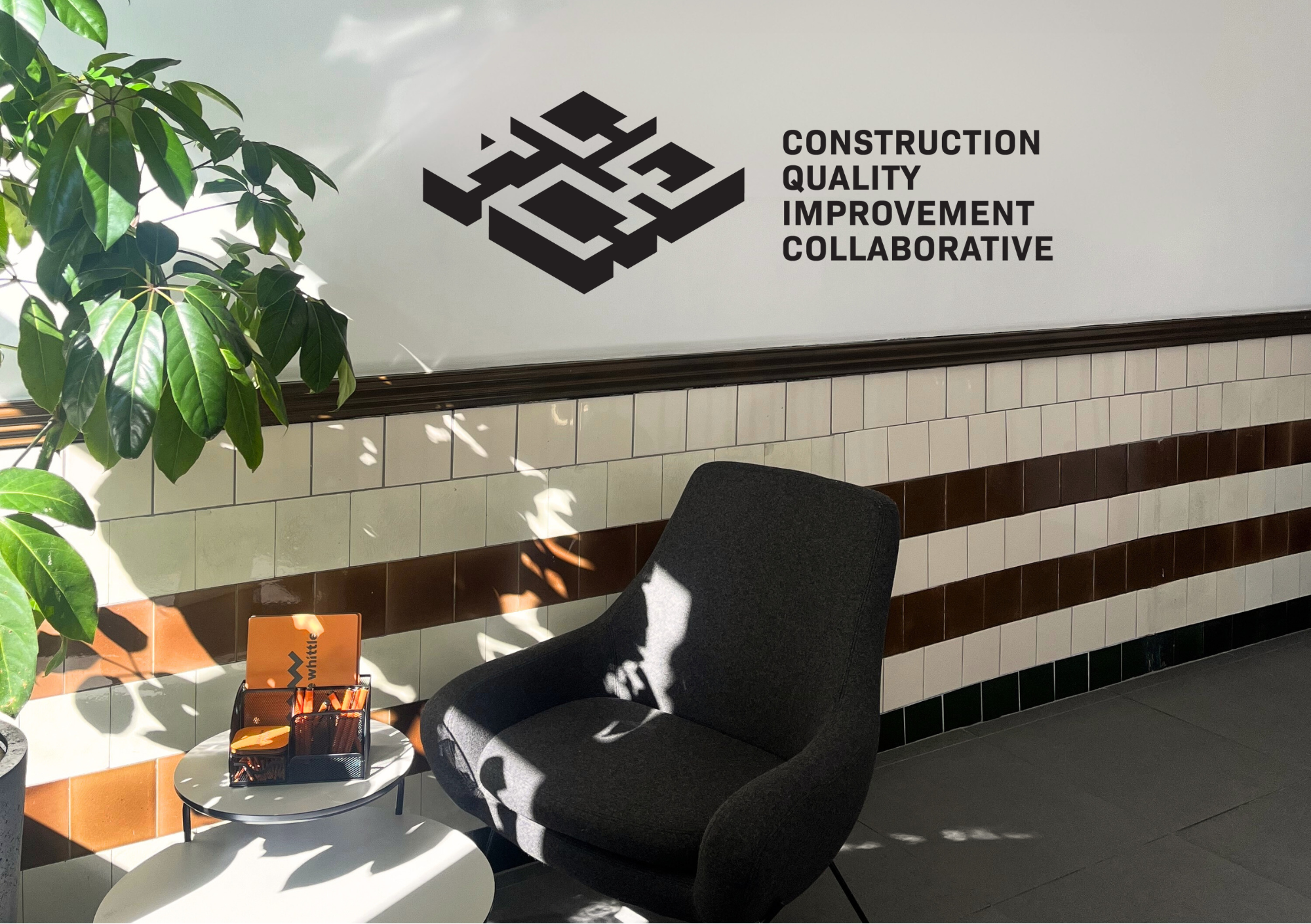
At Wallace Whittle, Quality of Product and Quality of Service are fundamental to our operations. This dedication is exemplified through our WW:Academy which offers structured learning and development programs across four levels, tailored to different career stages, from junior staff to future leaders. The Academy is led by Paul Hargreaves, our Academy Manager, who collaborates closely with Raymond Kelly, our Quality & Standardisation Manager, both bringing extensive experience in the construction industry.
“Our commitment to quality is embedded in all of our processes and our culture. By aligning with the CQIC Charter, we’re reinforcing our dedication to delivering excellence in every project, ensuring that quality is not just an expectation but standard.”
Raymond Kelly, Quality & Standardisation Manager.
Our commitment to quality is further reinforced by embedding quality control and assurance processes within our internal project programs. We allocate dedicated time for quality checks on all project outputs and conduct continuous internal monitoring to ensure adherence to our high standards. This approach aligns with the CQIC Charter’s emphasis on doing it right the first time and creating conditions that embed a “right first time” culture.
By joining the CQIC Charter, we are reaffirming our dedication to a quality-centric culture, supporting the ambitions of the Scottish Construction Accord and contributing to the advancement of the construction industry in Scotland.
To learn more about how Wallace Whittle is driving quality through the CQIC Charter, feel free to reach out to Raymond Kelly or contact us at [email protected]
UK's Net Zero Carbon Building Standard
News
UK's Net Zero Carbon Building Standard
Building for the Future: Navigating the UK Net Zero Carbon Building Standard
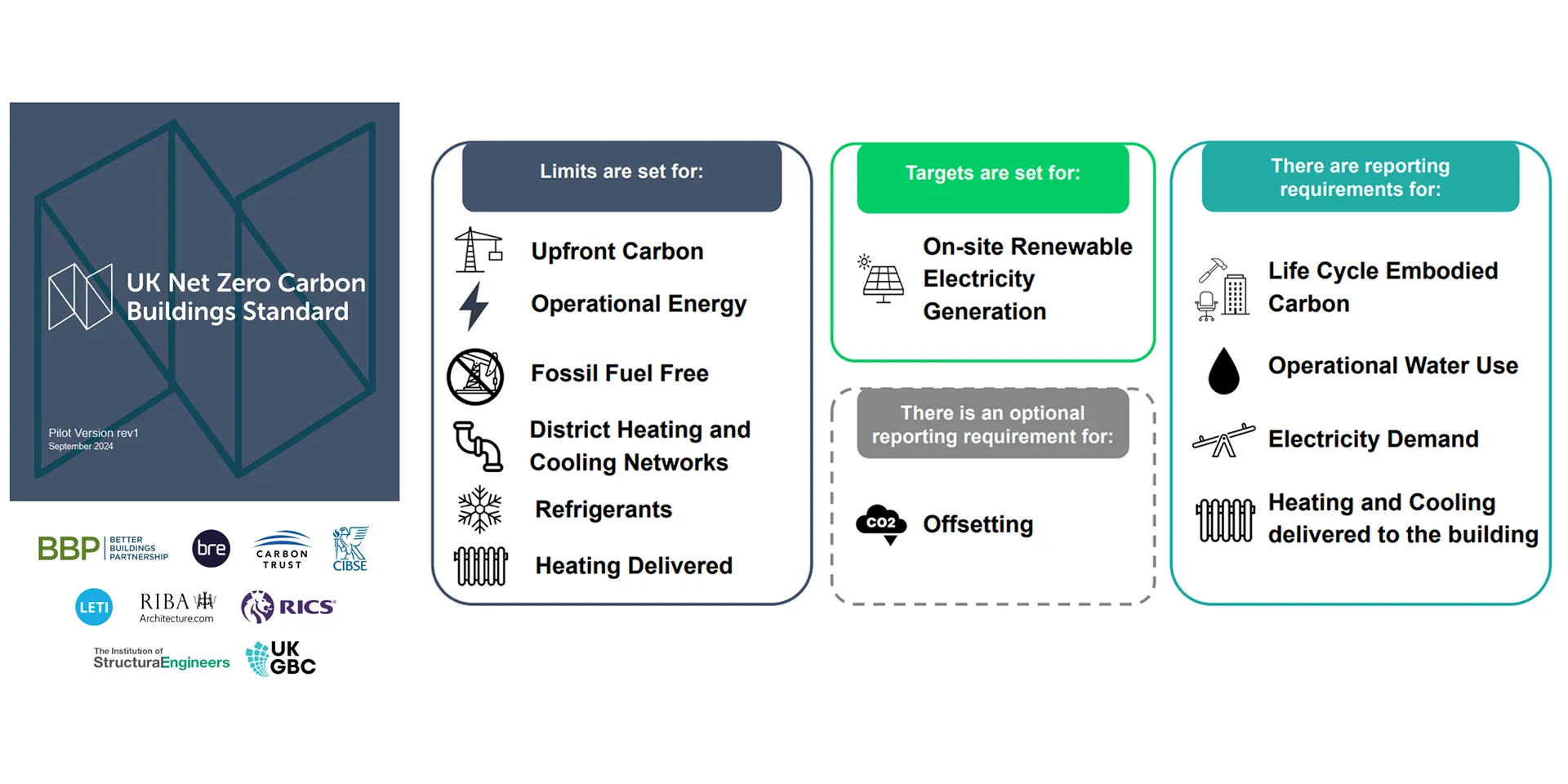
The UK Net Zero Carbon (UKNZC) Building Standard is an initiative that aims to tackle climate change. The pilot version of the Standard launched in September 2024. With the goal of delivering Net Zero Carbon Buildings by 2050, this voluntary standard sets ambitious new benchmarks for the built environment.
The Standard adopts both a phased approach and sector-specific targets, understanding that achieving net zero carbon emissions in buildings is a long-term goal and requires a phased approach, but also that different building sectors have unique characteristics and challenges in achieving net zero carbon emissions, meaning there are also sector-specific targets.
Consolidating existing standards and guidelines from organisations such as the BSI, UKGBC, LETI, RIBA, RICS, and CIBSE, The Standard establishes a unified process for achieving net-zero buildings by addressing carbon emissions across new developments and existing structures. The Standard covers retrofits, renovations, and replacements, and provides a framework for significantly reducing the carbon footprint of buildings across all sectors.
“Organisations and clients across all sectors are setting bold net-zero ambitions in line with their ESG commitments. However, the real challenge lies in delivering on these goals in a transparent and measurable way. Buildings play a critical role in this effort, both in understanding their environmental impact and achieving meaningful carbon reductions. The UKNZC Building Standard provides a clear, structured framework that leverages industry expertise to support this transition. Its introduction is a welcome step toward a more sustainable built environment.” Nick Hayes, Head of ESG & Sustainability, shared.
Overview of The UKNZC Building Standard
As buildings account for around 40% of the UK’s total energy consumption and 23% of greenhouse gas emissions, The UKNZC Building Standard applies to a broad range of building types, across residential, commercial, and public sectors, in attempt to reduce those emissions, and make the shift to a more sustainable environment.
Unlike many previous industry initiatives, the UKNZC Standard takes a comprehensive and holistic approach to assess a building’s carbon impact, considering both embodied and operational carbon emissions. This ensures that carbon reduction is not treated as a one-off effort, but rather as an ongoing commitment spanning the entire lifecycle of a building.
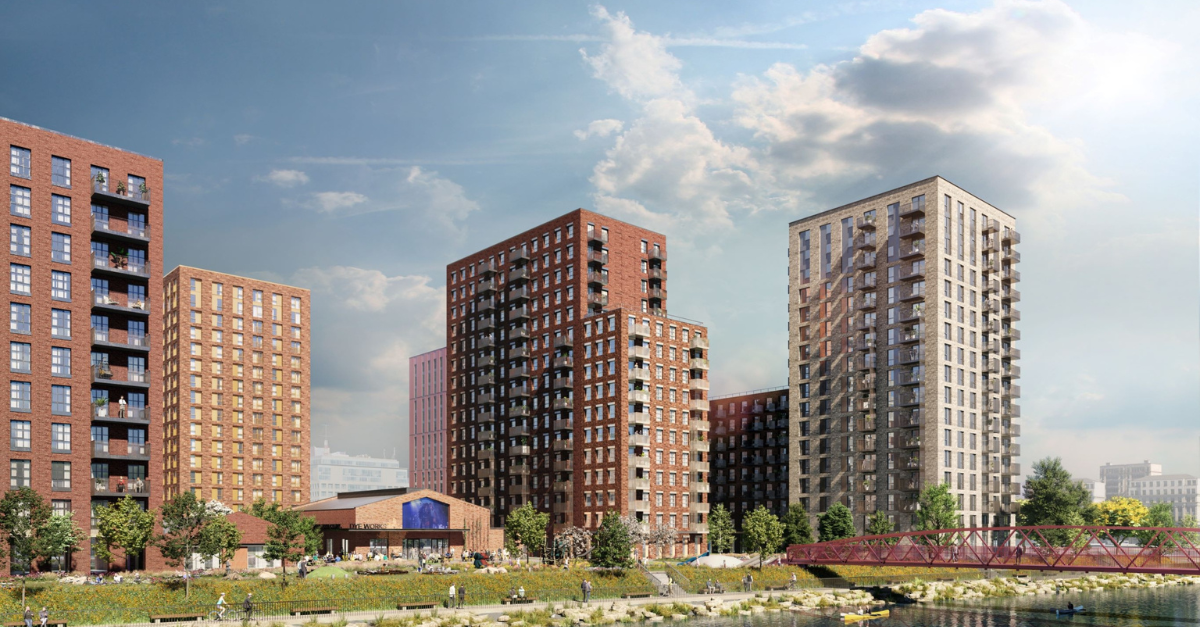
Key Components of the Standard
The core objectives of the UKNZC Building Standard focus on reducing both embodied and operational carbon emissions across the entire life-cycle of buildings. It emphasises genuine carbon reduction over offsetting, transparency through independent validation, and encourages innovation and collaboration to achieve a sustainable, net-zero carbon built environment. Limits and reporting metrics are proposed for various key components, which become progressively more stringent each year, which in turn incentivises early action to reduce energy consumption. The proposed targets are subject to third-party verification to confirm that the buildings meet the requirements. Each component targets a critical aspect of carbon reduction and sustainability, ensuring that every aspect of a building’s emissions is considered:
The Standard currently provides benchmarks for Upfront Embodied Carbon, referring to the emissions associated with the materials and construction processes up to the point of building completion. The limits vary based on the building type and reportable work (new build, retrofit, etc.). Future versions of the Standard are expected to include limits for Whole Life Embodied Carbon, which encompasses embodied emissions throughout a building’s life cycle, including demolition and disposal. There are also reporting requirements for the assessment of both lifecycle (whole life) and upfront embodied carbon.
The Standard sets limits for Annual Energy Use Intensity (EUI), which must be demonstrated using measured data from the building in use. Similarly to embodied carbon, these limits vary depending on the sector and building type. The Standard also requires annual operational carbon emissions and the energy intensity of specific energy end-uses to be reported for some building types. While there are no pass/fail limits for water usage, the Standard requires reporting of annual operational water use, water use intensity, and water emissions intensity.
The Standard sets a limit on the Global Warming Potential (GWP) of refrigerants used in buildings, capped at 677 kgCO2e/kg, equivalent to the GWP of the refrigerant R32. If the total GWP of refrigerants in a building exceeds 3,000 kgCO2e (equivalent to 4.4 kg of R-32), annual emissions from refrigerant leakage for products regulated by the Kyoto Protocol must be reported. These limits will help existing regulation by phasing down fluorinated gas usage and promote the push towards ‘natural’ refrigerants with lower GWPs, such as CO2 or propane.
The Standard requires building projects to track and report electricity usage patterns. Although there is no specific pass or fail targets yet, projects must report key data points, such as the date, time and electricity demand for periods representing the 99th, 50th, and 1st percentiles of energy use. Although the pilot version of the standard focuses on reporting, future versions may introduce specific targets, such as limits on peak winter electricity demand.
The Standard emphasises on measuring and reporting data, both for individual buildings and district systems, which are crucial for transparency and verification of net-zero claims. Centralised systems, which serve multiple buildings, can be more efficient and deliver lower adverse environmental impacts than individual systems. The Standard sets carbon intensity limits (kgCO₂e/kWh) for heating and cooling, with stricter benchmarks for new systems and requirements for reporting annual energy use and emissions.
The Standard emphasises the use of on-site renewable generation as a crucial strategy for reducing a building’s carbon footprint and achieving net-zero targets. This aligns with broader efforts to decarbonise energy supply and reduce reliance on fossil fuels. The Standard includes specific targets for the annual amount of on-site renewable electricity generation that a building must achieve, which varies depending on the region and the type of building. The standard acknowledges that not all buildings may be able to meet the on-site generation targets in exceptional circumstances due to site constraints, and limited roof space for solar panels etc.
This is a central requirement of the standard. All buildings are able to operate free from the use of fossil fuels, meaning eliminating the use of fossil fuels such as grid-supplied gas, oil and coal for the purposes of space and water heating, and cooking. Eliminating fossil fuel use is essential to delivering net-zero buildings, but it must be complemented by other strategies, such as reducing overall energy demand and integrating renewable energy.
The UKNZC Building Standard does not outline specific methods to achieve its goals but instead sets clear benchmarks, which can foster innovation and encourage tailored solutions.
The Standard creates opportunities for us to work with clients, architects, and other stakeholders to deliver integrated, efficient, and forward-thinking designs. As the industry embraces this shift towards decarbonisation, our experience in MEP design, Sustainability, and ESG principles positions us to help our clients follow the pilot standard and drive meaningful change.

Strategies for Implementation
At Wallace Whittle, we believe that achieving net-zero carbon starts at the very beginning of a project. By integrating sustainability principles early into the design and planning stages, we ensure that every aspect of the building process is aligned with net-zero goals. This involves selecting sustainable materials, optimising building fabric for energy efficiency, sourcing materials locally, and incorporating renewable energy solutions from the outset.
We work closely with our clients to ensure these principles are part of the foundation, ensuring long-term sustainability from day one. Some of the strategies include:
By integrating sustainability principles into the design and planning stages, we ensure that every aspect of the building process is aligned with net-zero goals. Such as selecting sustainable materials, optimising building fabric, and incorporating renewable energy solutions from the outset. At Wallace Whittle, we work closely with our clients to ensure these principles are part of the foundation, ensuring long-term sustainability from the get-go.
Meeting net-zero carbon targets requires collaboration across all disciplines — architects, engineers, contractors, and developers. We foster this collaboration by sharing knowledge, best practices, and innovative solutions and understand that achieving these ambitious goals requires a collective effort.
To meet the targets set by the UK Net Zero Carbon Building Standard, investment in training and education is essential. We are committed to upskilling the next generation of engineers and professionals to design and calculate net-zero carbon buildings. We recognise that addressing the skills gap is critical, we therefore provide ongoing training to our team across the business with our WW:Academy. However, we also recognise that this is a wider industry challenge that requires policy support and investment at all levels, including funding for education and skills development.
Government incentives, grants, and streamlined planning processes are crucial to supporting the transition to net-zero carbon buildings. We actively advocate for such policy support and align our work with the evolving regulatory landscape. With the new Labour 2024 Budget placing emphasis on sustainable initiatives, we are aiming to leverage these resources.
We understand that to achieve net-zero emissions, we must think beyond efficiency and focus on sufficiency by designing buildings that meet the needs of the occupants without over-consuming resources. Many existing standards optimise “business as usual” approaches, which can still result in over-consumption and continued emissions. By rethinking our approach to consumption and resource use, we can design and deliver truly sustainable buildings that make meaningful contributions to carbon reduction goals.
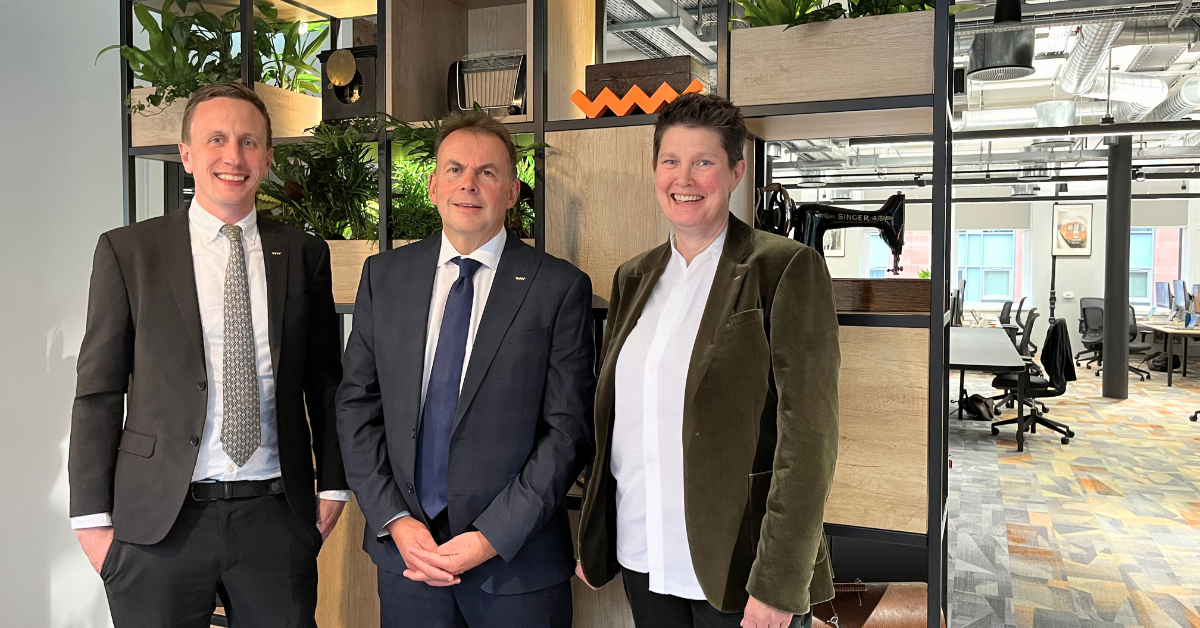
As the UK Net Zero Carbon Building Standard paves the way for a more sustainable environment, it sets ambitious yet achievable benchmarks for reducing carbon emissions across all sectors. While the path to net-zero demands collaboration, innovation, and long-term commitment, it also opens unprecedented opportunities for forward-thinking consultancies like Wallace Whittle to lead by example.
The UKNZC Building Standard is more than a framework; it is a call-to-action. Through commitment and collaboration, we can meet these ambitious goals and create a built environment that better benefits buildings, people and the planet!
Connect with our ESG or Sustainability team to discover how we can help your business meet its ESG goals and implement more sustainable solutions, get in touch today.

Felipe Tibabuzo Castro
Sustainability Associate

Cameron Duff
Sustainability Consultant
